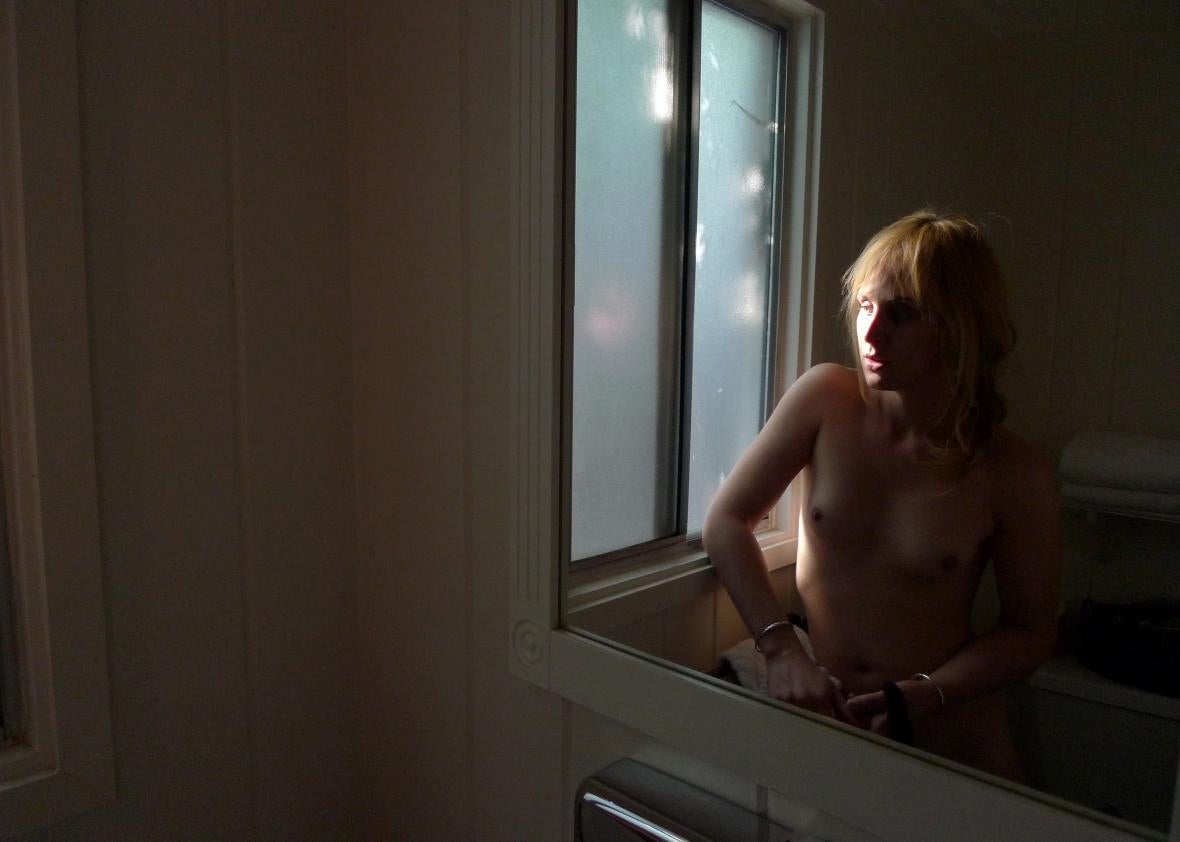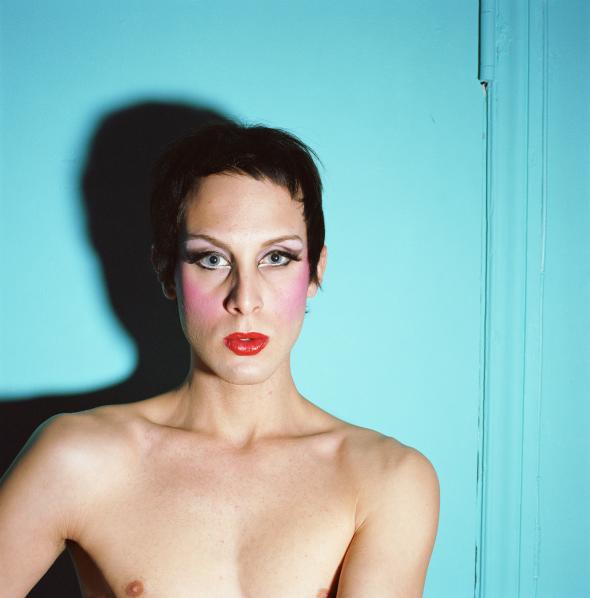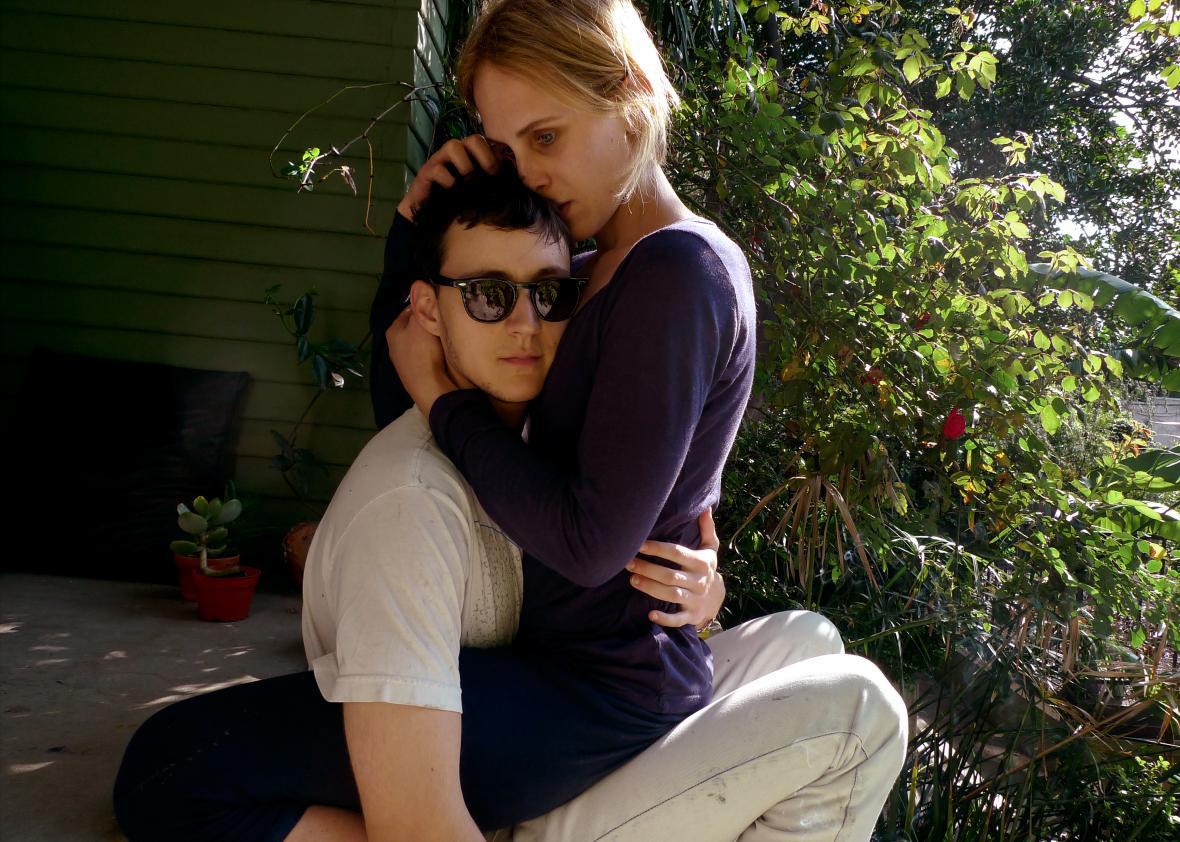In Relationship, their new book of photographs, artists Rhys Ernst and Zackary Drucker document the six-year span of their romantic union—a time period when their careers and lives were undergoing incredible (and parallel) shifts. By 2014, when the book concludes, they’d gone from grad students in the arts to artists featured in the Whitney Biennial (where these photos debuted publicly), and from making films at home on severely limited budgets to working on the blockbuster Amazon show Transparent.

Photography © 2016 Zackary Drucker and Rhys Ernst. Courtesy of the artists and Luis De Jesus Los Angeles.
Simultaneously, both were also undergoing gender-confirming physical transformations, Drucker to match her female identity and Ernst to match his male. Today, the trans community is much more visible than ever before. However, mainstream visibility is almost always filtered through the eyes of the cisgender people who write the TV scripts, cast the actors, and curate the art shows. Relationship is different. It has its genesis in the love Ernst and Drucker shared, and they never originally considered showing these photos publicly. Thus, not only is this project unconcerned with the reception of a larger cisgender world, it is also (for the most part) unconcerned with the artists’ own trans identities. Instead, these photos are simply a document of love, which happened to exist between two trans people at a time when loving one’s trans self (or trans lover) is a radical act.
I saw down with Drucker to discuss Relationship, photography as an art form, and the difficult balance of being both an artist and an activist.
This interview has been edited and condensed for clarity.
In the text you wrote to accompany the photos, you mention that when you and Rhys first met with Stuart Comer (curator of the 2014 Whitney Biennial), you didn’t even show him these photos. Why not?
At the time Rhys and I met, we were both starting to transition, which is such a vulnerable period for anybody. You’re an adult and your body is going through a second puberty. I think that had something to do with it—not feeling compelled to share immediately because it was a sensitive, awkward time.

Photography © 2016 Zackary Drucker and Rhys Ernst. Courtesy of the artists and Luis De Jesus Los Angeles.
But after time had passed and we had amassed this collection of images, we realized it was this incredible archive, and there were so many images, such a variety of experiences and moods and times in our lives, that we began to see the overall journey. The series basically takes place in the house that we were living in, which was a world that we had constructed together. So even if one of us was out of town and the other took a self-portrait or something, it was considered fair game.

Photography © 2016 Zackary Drucker and Rhys Ernst. Courtesy of the artists and Luis De Jesus Los Angeles
It was so interesting because the film that we made, She Gone Rogue [which was also featured in the Whitney Biennial], was a piece that we put a year of blood, sweat, and tears into, and we still consider it such a masterful work in many ways. And the photographs were so easy: They were just what was happening. They were our daily lives, and it felt, for us, too easy to be work, to be art. I was in the photography/media program at Cal Arts, and I think I had to disabuse myself of the kind of rigorous, theoretical, and conceptual process of Cal Arts, which is so antithetical to photography because photography is so much about visual pleasure and spontaneity. We found that the photographs cut to the core and spoke to viewers in a way that She Gone Rogue didn’t. The film demanded 25 minutes of the viewer’s attention, and that’s very hard to do in a museum or exhibition space. But anybody walking by a set of documentary photographs has 90 seconds to absorb the content. There’s something so direct about that approach. It wasn’t complicated by language or the person speaking back to you, so it reached more people.
I’ve seen these photos compared to everyone from Nan Goldin to Cindy Sherman to Catherine Opie. Do any of those analogies speak to you?
I’m sure there are common denominators. I think Nan Goldin loved people through her photographs, and the love that Rhys and I were sharing is communicated through our photographs really effectively. I have a very traditional photography background, but I think Relationship is more influenced by filmmaking and by narrative. We certainly edited it as a photo project and as a book, with a narrative arc. We were really thinking about how to construct this story, not necessarily in a linear way, but in an abstract way. It’s loosely chronological, but there are many times that the sequencing falls out of that chronology
Before this project, I was always taking photographs as a documentation of performance. Relationship is a life performance. So I think elements of other mediums and performativities are infused in the photographs.

Photography © 2016 Zackary Drucker and Rhys Ernst. Courtesy of the artists and Luis De Jesus Los Angeles.
One thing I found a little off-putting was that, aside from Kate Bornstein’s essay, the other texts in the book felt a little overly focused on your gender identities, not the fact of your connection to each other. It’s called Relationship, after all, not Transition. Did you feel that way?
The thing that I respond to about what you just said is that when Rhys and I were taking the pictures, the only time we thought of [transitioning] was when there was that picture of the Band-Aids on our butts. Like, that is a trans photograph. But otherwise we were just photographing the person that we were in love with and obsessed with. We were really just enamored with each other. There was no piece of that that was like “this is the photograph of my trans lover.” It was “this is my lover.”
But it was an honor to have all their voices in the book. Kate is just a huge archetype for both of us. Maggie Nelson is such an incredible writer, a person we both revere and read avidly. And Stuart was like a third collaborator on the project.

Photography © 2016 Zackary Drucker and Rhys Ernst. Courtesy of the artists and Luis De Jesus Los Angeles.
Both you and Rhys are powerful advocates for trans folks. How do you balance that with your art-making?
It’s such a unique time to be a trans person in America, and it necessitates filling multiple roles. For me, that’s not only being an artist, but also being a responsible advocate and community member.
It’s unusual because as an artist you’re really consumed by representing your own experience and there isn’t this imperative of helping a community. I see them in a lot of ways as separate, but our role on Transparent really balances art and activism, because the form itself is art. The show is this incredible mosaic, this work of art that so many people have come together to create, but what’s happening behind the scenes? Rhys and I do a lot of activism in pushing the 200 people involved toward really understanding a trans experience, what they’re part of, and what they’re representing. And then there’s all the other stuff, like talking about Transparent and hiring as many trans and gender queer folks as possible behind the scenes.
The simplest way to put it is as artists, we complicate meaning, we add layers, and we don’t make it easy because then it’s not interesting. It’s just one line. But as an activist, you deconstruct all those layers of meaning to speak across borders and boundaries, and to reach as many people as possible. You’re really looking for the common denominator. You’re looking at how to reach humanity.

Photography © 2016 Zackary Drucker and Rhys Ernst. Courtesy of the artists and Luis De Jesus Los Angeles.
